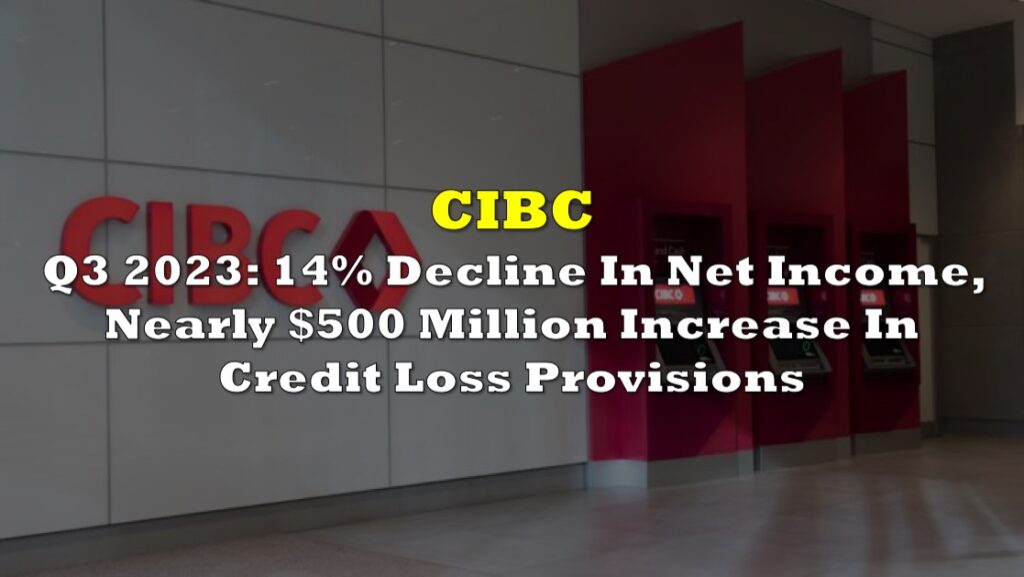CIBC (TSX: CM) reported its Q2 2025, with a revenue jump of 14% YoY to $7.0 billion but fell 4% from the previous quarter, while reported net income rose 15% to $2.0 billion yet slid 8% sequentially.
Net interest margin ticked up to 1.54%, helped by loan-pricing discipline, but the benefit was largely absorbed by a 17% jump in non-interest expense and a $605 million credit loss provision—an 18% leap from last year and 6% above Q1. Adjusted pre-provision, pre-tax earnings of $3.21 billion rose 19% YoY but fell 6% QoQ.
Diluted EPS followed the same pattern—up 14 % YoY to C$2.04, down 7 % QoQ—underscoring the pressure from higher provisions and expenses.
Adjusted EPS was $2.05—still down 7 % QoQ. Management’s touted “organic growth engine” is therefore running just to stand still, with CET1 consumption the clearest cost: capital slipped 10 bps in a single quarter to 13.4%, even before the bank’s $0.97 dividend absorbs more equity in July.
Canadian P&BB net income inched up 4% to $734 million, while US Commercial & Wealth nearly doubled to $173 million on a sharply lower provision, and Capital Markets delivered a 20% improvement to $566 million.
CEO Victor Dodig—set to retire in October—insists CIBC is “navigating volatility from a position of strength,” pointing to robust capital and client growth. Yet the numbers show capital edging down, credit costs accelerating, and expense growth out-running revenue on a sequential basis—risks his successor Harry Culham will inherit.
CIBC last traded at $93.33 on the TSX.
Information for this briefing was found via Sedar and the sources mentioned. The author has no securities or affiliations related to this organization. Not a recommendation to buy or sell. Always do additional research and consult a professional before purchasing a security. The author holds no licenses.









